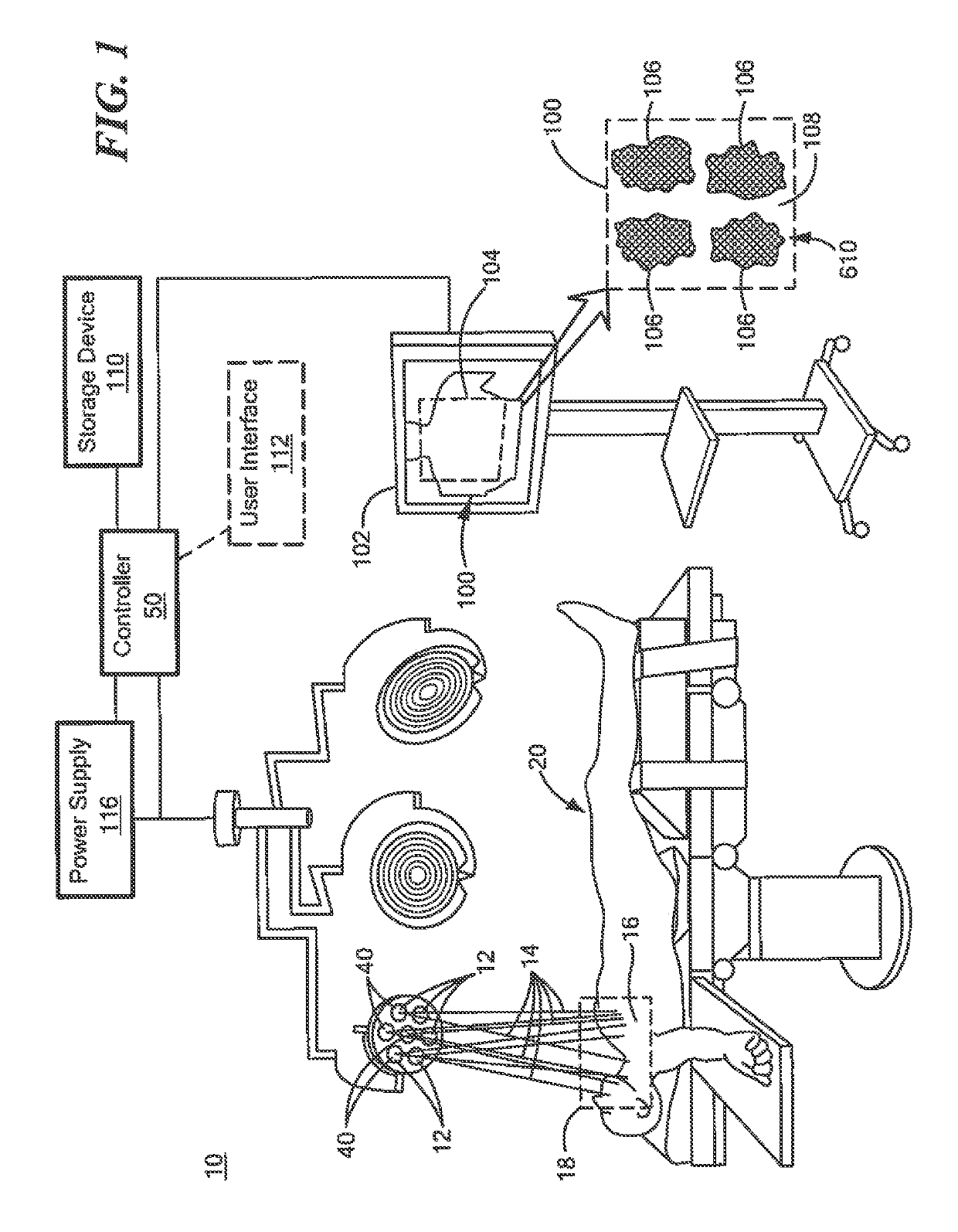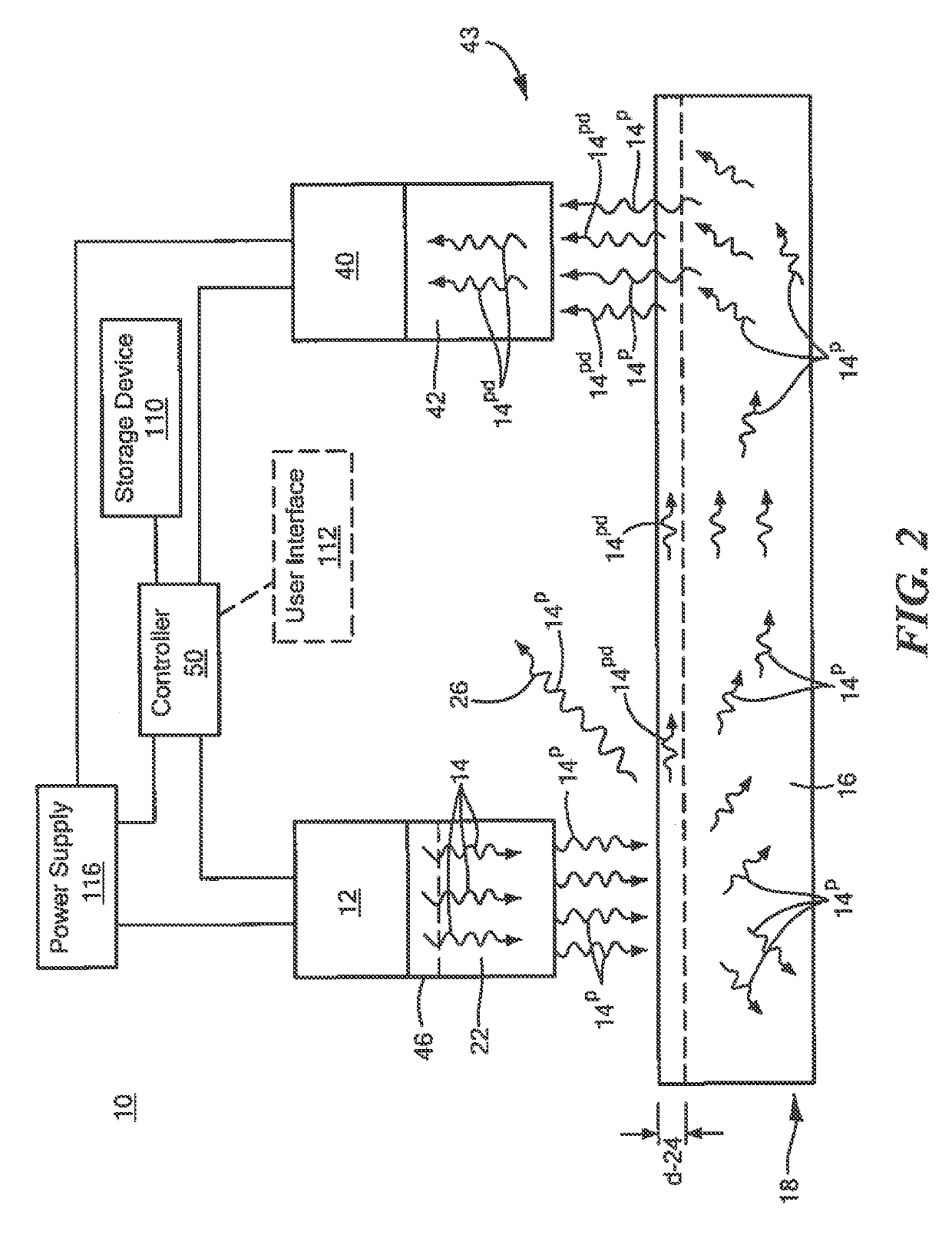Contactless System and Method For Assessing Tissue Viability and Other Hemodynamic Parameters
a contactless system and hemodynamic parameter technology, applied in the field of contactless system and method for assessing tissue viability and other hemodynamic parameters, can solve the problems of inflicting trauma to already vulnerable tissue, increasing the risk of wound infection, and subjective tissue excision procedures
- Summary
- Abstract
- Description
- Claims
- Application Information
AI Technical Summary
Benefits of technology
Problems solved by technology
Method used
Image
Examples
Embodiment Construction
[0021]Aside from the preferred embodiment or embodiments disclosed below, this invention is capable of other embodiments and of being practiced or being carried out in various ways. Thus, it is to be understood that the invention is not limited in its application to the details of construction and the arrangements of components set forth in the following description or illustrated in the drawings. If only one embodiment is described herein, the claims hereof are not to be limited to that embodiment. Moreover, the claims hereof are not to be read restrictively unless there is clear and convincing evidence manifesting a certain exclusion, restriction, or disclaimer.
[0022]FIG. 1 shows one embodiment of contactless system 10 for assessing of tissue viability and other hemodynamic parameters. System 10 preferably includes one or more light sources 12 configured to emit light 14 at a predetermined wavelength sensitive to hemoglobin concentration associated with spontaneous hemodynamic osc...
PUM
 Login to View More
Login to View More Abstract
Description
Claims
Application Information
 Login to View More
Login to View More - R&D
- Intellectual Property
- Life Sciences
- Materials
- Tech Scout
- Unparalleled Data Quality
- Higher Quality Content
- 60% Fewer Hallucinations
Browse by: Latest US Patents, China's latest patents, Technical Efficacy Thesaurus, Application Domain, Technology Topic, Popular Technical Reports.
© 2025 PatSnap. All rights reserved.Legal|Privacy policy|Modern Slavery Act Transparency Statement|Sitemap|About US| Contact US: help@patsnap.com



